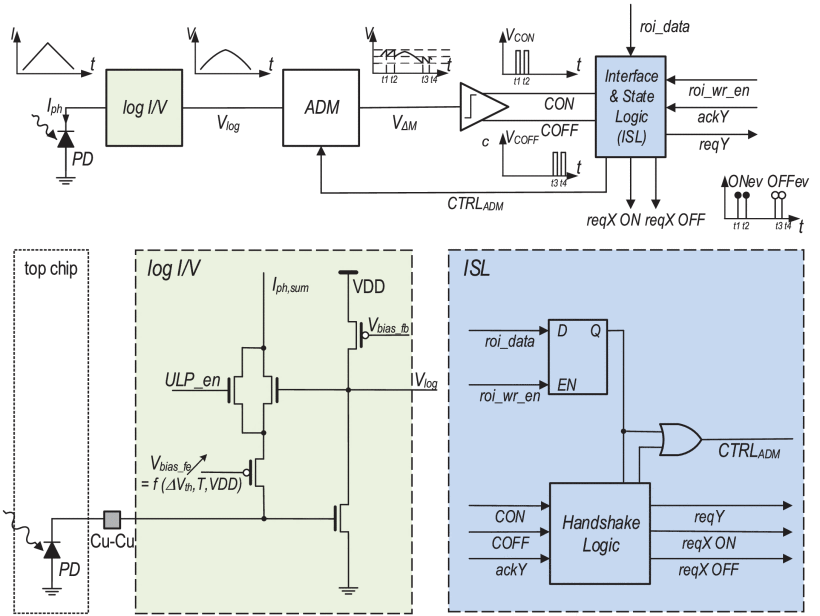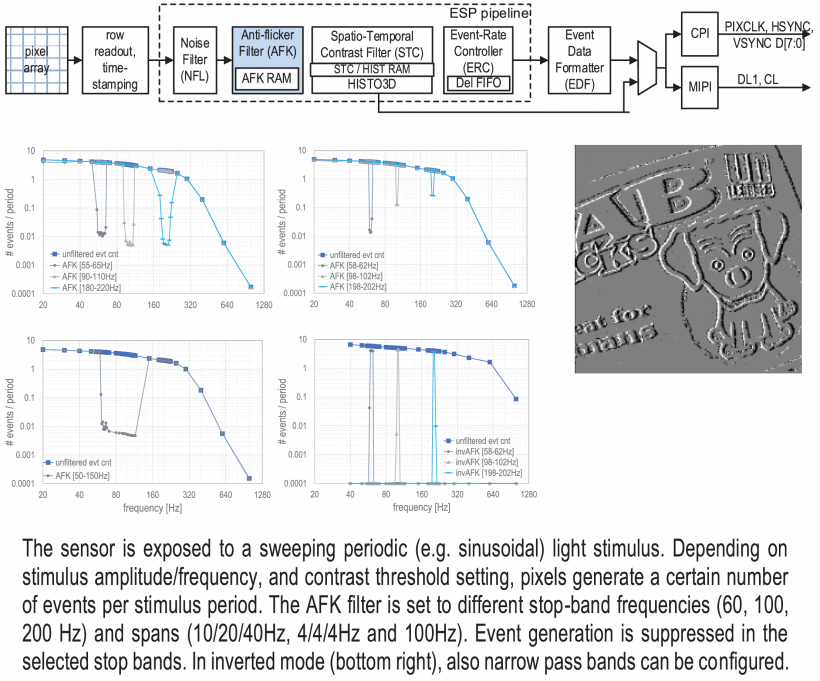Schon et al from Prophesee published a paper titled "A 320 x 320 1/5" BSI-CMOS stacked event sensor for low-power vision applications" in the 2023 VLSI symposium. This paper presents some technical details about their recently announced GenX320 sensor.
Abstract
Event vision sensors acquire sparse data, making them suited for edge vision applications. However, unconventional data format, nonconstant data rates and non-standard interfaces restrain wide adoption. A 320x320 6.3μm pixel BSI stacked
event sensor, specifically designed for embedded vision, features multiple data pre-processing, filtering and formatting functions, variable MIPI and CPI interfaces and a hierarchy of power modes, facilitating operability in power-sensitive vision
applications.






Why with a larger PD and higher fillfactor the contrast sensitivity is lower ? By the way this sensor cannot be used in automotive application since at 55C, the detection threshold is reduced 10 times, am I right? thanks
ReplyDeleteI don’t see any indication that this sensor is designed for automotive use. Did I overlook something?
DeleteThe last figure also shows the bandwidth of the logarithmic detector, around 300 Hz in this measurement. This is set by the photodiode capacitance, gain of the inverting amplifier in the pixel and the resistance of the load (1/gm for the load, which is inversely proportional to the photocurrent). So it is dependent on the light level. What is the light level in this measurement, and how much is the bandwidth for very low light conditions? Thanks, Guy
ReplyDeleteHey Guy, nice to see your name, I finally checked the blog after about a year. There is no magic, at very low intensity the bandwidth gets small (e.g. Hz) but it is still not clear to me if that also means that the event timing just has more jitter and latency or how much it really degrades. I.e. even if the BW goes to 1Hz, does it mean that all timing is lost for higher frequencies? Or just the contrast sensitivity is reduced and the jitter is increased? The main thing is that the feedback loop around the photoreceptor increases the effective source conductance by a factor of the loop gain, however the Mfb Miller cap limits this because it is amplified by the open loop gain of the forward amplifier.
ReplyDeleteFinally a production ready really low power DVS (even if they don't dare call it that) with decent pixel size and number and integrated useful features for IoT applications. Chip looks quite handy. I ran the original DVS128 (our Tmpdiff128 chip) at about 1mW total power a long time ago just by swapping the master bias resistor from 100k to 1MOhm, but of course then the max event rate was only OK for surveillance scenes with low activity and slower moving small objects. I don't know about their scheme of just sensing light change in blocks. The no brainer is just to add a PIR sensor module that burns a few uW.
ReplyDelete